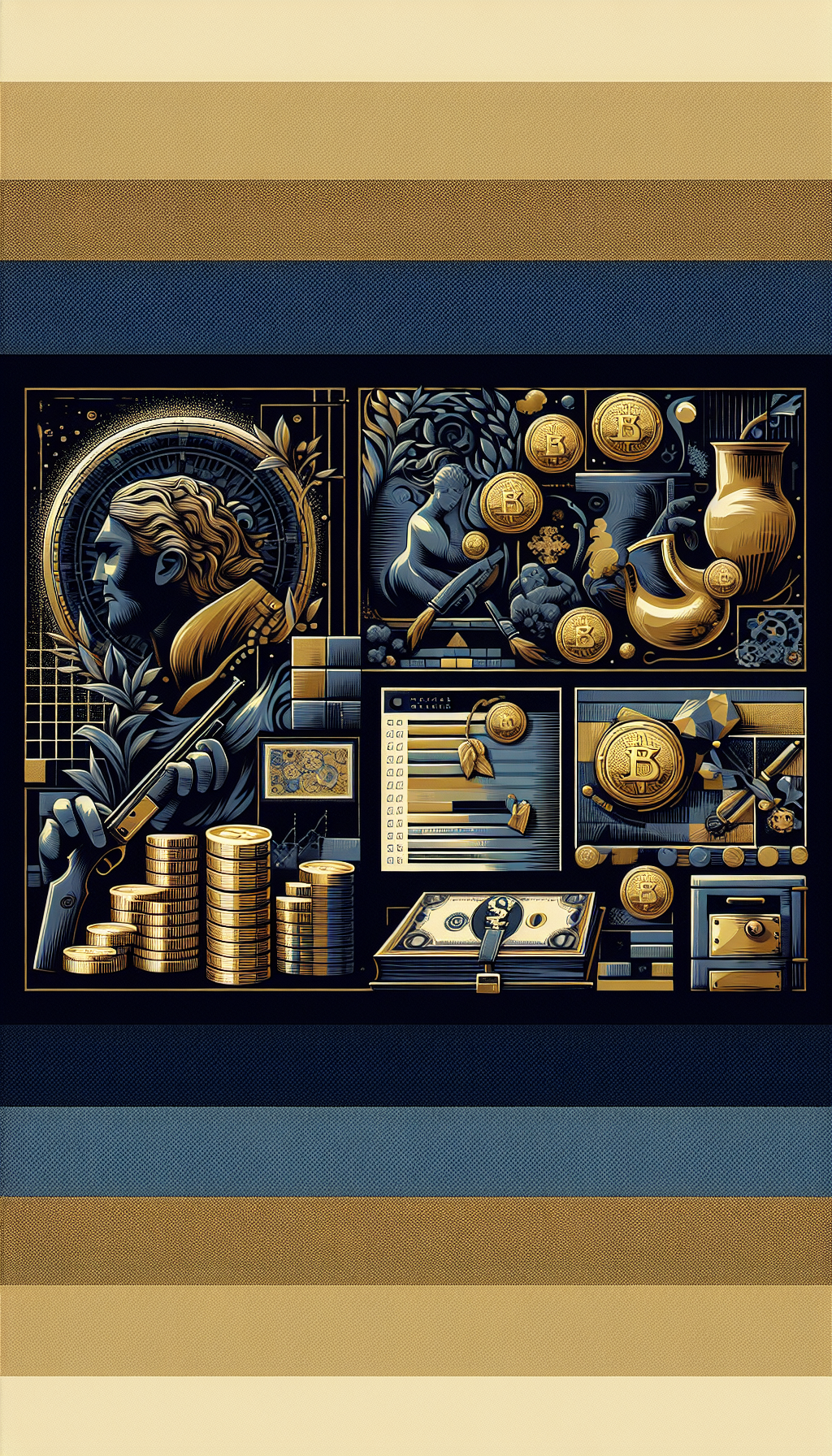An Original Etching By Axel Herman Haig 1835 1921
Axel Herman Haig (1835–1921) is one of the most collectible architectural etchers of the late 19th century. Often dubbed “The Etcher of Cathedrals,” he combined the precision of an architectural draughtsman with the drama of Romantic line-work to create highly detailed views of cathedrals, castles, and historic urban vistas across Britain and continental Europe. For collectors and appraisers, his prints present a rewarding mix of artistry, technical virtuosity, and a market that rewards rarity, early impressions, and condition.
This guide explains how to identify an original Haig etching, what features to look for, how to assess condition, and what typically drives value.
Who Was Axel Herman Haig (1835–1921)
- Background: Swedish-born and later active in Britain, Haig trained as a draughtsman and worked with leading Gothic Revival architects. That training shows in his mastery of perspective and minute architectural detail.
- Subjects: Grand cathedral interiors and exteriors; medieval castles and fortified towns; Venetian, French, and Spanish architectural subjects; dramatic skies and waterways that accentuate stonework and light.
- Reputation in his day: Exhibited widely, published portfolios of etchings, and became a household name among collectors of original prints in the late Victorian and Edwardian periods.
- Style hallmarks: Luminous skies achieved through controlled plate wiping; panoramic vertical compositions; precise hatchwork; and interiors that balance soaring scale with intimate detail—tracery, vaulting, screens, and choir stalls rendered with near-architectural fidelity.
For today’s collector, Haig is prized for the way he captures historic architecture with draftsmanship that remains visually compelling and technically rich under magnification.
What Counts as an “Original Etching”
Understanding terminology helps avoid confusing a true original print with a reproduction.
- Original etching: Designed and etched by Haig into a metal plate (usually copper), inked, and printed by hand on a press. The print shows an indented plate mark and nuanced inking (plate tone) typical of hand printing.
- In-plate versus pencil signatures:
- In-plate signature and date: Etched into the plate and appears within the image. Common on standard impressions.
- Pencil signature: Signed “Axel H. Haig” in graphite in the lower margin (usually right). Pencil-signed impressions, including proofs, are generally more desirable.
- “imp.” after signature: Short for “impressit” (printed by the artist). A pencil signature reading “Axel H. Haig imp.” suggests he personally pulled the impression—often a premium feature.
- States: Variations of the plate over time. Early states may show fewer letters or different details. Later states might include etched titles or added shading. Earlier states often command higher prices if scarce.
- Proofs and remarques:
- Trial proofs (TP): Prepublication impressions used to check progress; sometimes annotated. Scarce, often more valuable.
- Artist’s proofs (A/P) or “proof before letters”: Printed before any etched captions, usually prized by collectors.
- Remarque: A small additional etched vignette near the plate or margin on earlier proofs; later commercial remarques were used as a selling feature. Genuine early remarques can add appeal; excessive or late-added remarques may not.
- Paper: Laid papers with visible chain and laid lines are common; Whatman and other high-quality 19th-century papers appear. Deluxe impressions may be on Japan paper (warm-toned, fibrous) or vellum (parchment). Full margins are important to value.
- Reproductions to watch for:
- Photogravures and collotypes: Mechanically made; under a 10x loupe you’ll see a uniform dot or screen pattern rather than incised, varied lines. They may lack the crisp, tactile plate mark or show a “faux” deboss lacking beveled edges and natural plate wear.
If your print lacks a clear plate mark, shows dot patterns under magnification, or the “signature” is printed rather than in pencil, you may be looking at a reproduction rather than an original etching.
How to Identify a Haig Etching: Signatures, Papers, and Tells
Use these features to corroborate that your print is an original Haig etching:
- Plate mark: An indented rectangular line surrounding the image from the pressure of the plate and press. Edge should look slightly beveled in raking light. Measure plate mark (image) size separately from sheet size.
- Pencil signature: Typically “Axel H. Haig” in the lower right margin; sometimes dated; occasionally with “imp.” Pencil signatures vary slightly; line quality should look natural under magnification (not mechanically uniform).
- In-plate inscriptions: An etched title may appear lower left/center, with an etched monogram or signature and date lower right within the image.
- Paper and watermark: Haig favored quality European laid papers. Look for watermarks (e.g., Whatman, Van Gelder) when viewed in transmitted light. Note that absence of a watermark does not automatically mean a reproduction.
- Printing characteristics:
- Plate tone: A veil of ink deliberately left on the plate during wiping to create atmosphere—often visible in skies or water.
- Line quality: Varied line weights, crosshatching, and (occasionally) burr from drypoint accents. Under magnification, etched lines are crisp and incised, not dot-matrix.
- Publisher/retailer clues: Some impressions carry blindstamps or old labels from notable London print dealers or societies; these can support provenance.
- Subject matter traits:
- Grand verticals: Towering cathedral interiors (naves, choirs, transepts) with complex rib vaulting.
- Continental tours: Rouen, Venice (Doge’s Palace, lagoons), Burgos, Seville, Toledo—subjects he frequently interpreted.
- British icons: Westminster, Canterbury, Durham, and other storied sites.
Document all inscriptions: lower margin pencil notes, etched titles, any numbering or state annotations. Photographs in raking light help capture the plate mark and surface.
Condition and Conservation: Factors That Move the Needle
Condition can swing value dramatically in works on paper. Assess objectively and note both front and verso.
Common issues and their impact:
- Trimming and margins: Loss of full margins can reduce value 10–40% depending on severity. If the plate mark is shaved or lost, the print’s desirability drops sharply.
- Staining and discoloration:
- Foxing (rust-colored spots), mat burn (brown lines along old mat window), and even overall toning are common. Moderate stains can cut value by 15–35%; heavy staining more.
- Light strike (image appears weak or faded) often stems from poor storage or excessive cleaning.
- Tears, losses, creases: Even expertly repaired tears affect value. Corner losses in margins are less impactful than intrusions into the image.
- Abrasions and skinning: From tape removal or over-cleaning; check the verso near old hinges.
- Paper condition: Brittle, cockled, or wavy sheets may suggest moisture exposure or non-archival framing.
- Plate wear: In later printings, fine lines soften and textures flatten, reducing visual punch and value relative to early impressions.
Conservation guidance:
- Keep prints untrimmed; never cut margins to “fit a frame.”
- Use acid-free mounts, rag mats, and UV-filtering glazing.
- Avoid direct sunlight and high humidity. Ideal storage: cool, dry, dark.
- Professional paper conservators can reduce foxing and mat burn and remove acidic backings; request written treatment proposals and before/after documentation.
Rarity, Editions, and Market Values
Haig’s published editions varied, and exact sizes are not always recorded. Market value hinges less on absolute edition numbers and more on subject desirability, state, paper, and condition.
Key value drivers:
- Subject: Iconic cathedrals and dramatic Venetian views generally outperform obscure subjects.
- Size and ambition: Large, densely worked plates with grand interiors command premiums.
- State and proof status: Early states, proofs before letters, pencil-signed “imp.” impressions, remarque proofs, and deluxe papers (Japan, vellum) can outpace standard editions.
- Condition: Full margins, clean sheets, strong impressions, and minimal restoration are rewarded.
- Provenance: Notations of exhibition, dealer labels, or period mounts from significant galleries support confidence and value.
Indicative price ranges (general guidance, subject to change with market):
- Typical standard impressions (good condition): roughly low hundreds to around $1,500.
- Desirable subjects, larger formats, strong early impressions or pencil-signed proofs: approximately $1,500–$3,500.
- Exceptional proofs (early state, “imp.”, deluxe paper, top condition) and trophy subjects: can reach $3,500–$6,000+, with rare cases exceeding that.
These ranges reflect common auction outcomes rather than retail asking prices; retail can be higher, and compromised condition can push values lower. Always correlate with recent, comparable sales by subject, size, and state.
Authentication and Appraisal Workflow
A structured approach will save time and reduce risk:
- Measure carefully: Record plate mark (height x width) and full sheet size. Note orientation and margins.
- Inspect the plate mark: Check for a crisp, beveled indentation; look for natural signs of hand printing.
- Magnify the lines: With a 10x loupe, confirm incised, varied line work rather than screen dots or uniform halftone patterns.
- Document inscriptions: Photograph the pencil signature, any “imp.” notations, etched titles, dates, and state annotations.
- Examine the paper: Check for laid lines, chain lines, watermarks, and overall paper tone. Note any chine collé or Japan paper laminations if present.
- Assess impression quality: Look for plate tone, depth of blacks, and clarity of finest lines; compare to known strong impressions when possible.
- Condition report: Describe stains, mat burn, creases, tears, losses, and trimming; photograph in normal and raking light, and front/back.
- Research subject and state: Match subject to cataloged titles and known states in published references or institutional databases; note any remarque variants.
- Consider provenance: Keep old labels, inscriptions, or receipts; never discard the original backing without photographs of all labels.
- Seek specialist opinions: For high-value or ambiguous works, consult a print specialist or accredited appraiser experienced in 19th-century etchings.
Practical Checklist (Print and Use)
- Confirm clear plate mark; record plate and sheet dimensions.
- Pencil signature present? Note exact wording and location.
- Look for “imp.” after signature on proofs.
- Inspect with 10x loupe: etched lines, no dot screens.
- Identify paper type; check for watermark; note margins.
- Evaluate impression strength and plate tone.
- Document all condition issues, front and verso.
- Photograph inscriptions, labels, and any blindstamps.
- Compare subject/state with trusted references.
- Store flat, in acid-free materials; avoid sunlight.
FAQ
Q: How can I tell if my Haig is a photogravure, not an etching? A: Use a 10x loupe. Photogravures show a consistent dot or grain pattern; etched lines are cut into the plate and vary in width and depth. Photogravures may have a simulated plate mark, but it lacks the natural beveled indentation and nuanced wipe patterns of a hand-printed etching.
Q: Does a pencil signature guarantee authenticity? A: It’s a strong positive indicator, but pencil signatures have been forged. Verify line quality under magnification, cross-check the style and form of the signature with known examples, and corroborate with printing traits (plate mark, line work, paper).
Q: Are remarques always more valuable? A: Early, genuine remarques on proof impressions can add desirability, particularly for major subjects. Later commercial remarques may not command a premium. Value depends on authenticity, context, and overall impression quality.
Q: My print’s margins are trimmed close to the plate mark. How much does that affect value? A: Trimming reduces value, sometimes significantly. If the plate mark remains intact with a small breathing margin and the image is clean, the print can still be collectible, but expect a discount versus full-margined examples.
Q: Should I clean foxing or mat burn before selling? A: Not without advice. Professional conservation can improve appearance and value, but it carries risks and costs. Obtain a conservator’s written treatment proposal and discuss with a specialist or appraiser before proceeding.
An authentic Axel Herman Haig etching—especially a strong early impression of a major subject on fine paper—combines beauty, historic interest, and enduring market demand. With careful identification and preservation, these prints remain a highlight in any collection of 19th-century architectural art.



